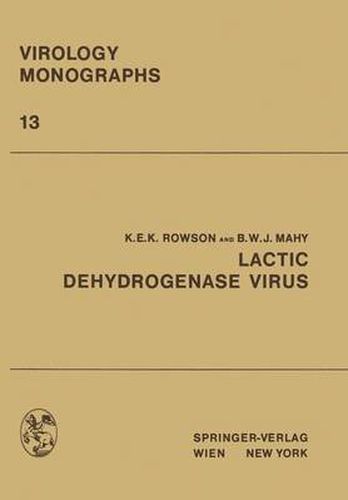Readings Newsletter
Become a Readings Member to make your shopping experience even easier.
Sign in or sign up for free!
You’re not far away from qualifying for FREE standard shipping within Australia
You’ve qualified for FREE standard shipping within Australia
The cart is loading…






This title is printed to order. This book may have been self-published. If so, we cannot guarantee the quality of the content. In the main most books will have gone through the editing process however some may not. We therefore suggest that you be aware of this before ordering this book. If in doubt check either the author or publisher’s details as we are unable to accept any returns unless they are faulty. Please contact us if you have any questions.
2 D. Immunological Response … … … … … … . . 78 1. Thymectomy in LDV Infection … … … … … . 81 2. Effect of LDV Infection on Immune Response to Various Antigenic Stimuli… . . 82 E. Tumour Growth . . 87 F. Histological Changes 91 VII. Ecology … … . 97 VIII. Laboratory Methods. . 100 A. Blood Samples from Mice for LDH Estimation . 100 B. Estimation of Plasma LDH Activity . . 101 1. Quantitative Methods… … . . 101 a) Determination of Plasma LDH by Spectrophotometric Method (Backward Reaction) … … … … … 101 b) Determination of Plasma LDH by Spectrophotometric Method (Forward Reaction) … … … … … . 102 c) Determination of Plasma LDH by Colorimetric Method 103 2. Qualitative Method… … . 103 3. Units of LDH Activity … . . 104 C. Diagnosis of LDV Infection in Miee. 105 D. Virus Titration. 105 References… … … … … . 106 We wish to express our thanks to our many colleagues who generously provided us with preprints of their work, and unpublished observations. We are particularly indebted to those who donated prints of their electron micrographs of the virus. I. Introduction Inapparent virus infections of experimental animals and tissue culture systems present to the investigator a problem which it is impossible to overcome completely. Although all recognised viruses can be excluded from an experimental system, previously unsuspected viruses causing no obvious effects (‘silent’ viruses) will continue to be discovered. A truly silent virus would replicate, causing no change in its host cell, damage to infected tissue or immune response and would pre sumably be of no consequence.
$9.00 standard shipping within Australia
FREE standard shipping within Australia for orders over $100.00
Express & International shipping calculated at checkout
This title is printed to order. This book may have been self-published. If so, we cannot guarantee the quality of the content. In the main most books will have gone through the editing process however some may not. We therefore suggest that you be aware of this before ordering this book. If in doubt check either the author or publisher’s details as we are unable to accept any returns unless they are faulty. Please contact us if you have any questions.
2 D. Immunological Response … … … … … … . . 78 1. Thymectomy in LDV Infection … … … … … . 81 2. Effect of LDV Infection on Immune Response to Various Antigenic Stimuli… . . 82 E. Tumour Growth . . 87 F. Histological Changes 91 VII. Ecology … … . 97 VIII. Laboratory Methods. . 100 A. Blood Samples from Mice for LDH Estimation . 100 B. Estimation of Plasma LDH Activity . . 101 1. Quantitative Methods… … . . 101 a) Determination of Plasma LDH by Spectrophotometric Method (Backward Reaction) … … … … … 101 b) Determination of Plasma LDH by Spectrophotometric Method (Forward Reaction) … … … … … . 102 c) Determination of Plasma LDH by Colorimetric Method 103 2. Qualitative Method… … . 103 3. Units of LDH Activity … . . 104 C. Diagnosis of LDV Infection in Miee. 105 D. Virus Titration. 105 References… … … … … . 106 We wish to express our thanks to our many colleagues who generously provided us with preprints of their work, and unpublished observations. We are particularly indebted to those who donated prints of their electron micrographs of the virus. I. Introduction Inapparent virus infections of experimental animals and tissue culture systems present to the investigator a problem which it is impossible to overcome completely. Although all recognised viruses can be excluded from an experimental system, previously unsuspected viruses causing no obvious effects (‘silent’ viruses) will continue to be discovered. A truly silent virus would replicate, causing no change in its host cell, damage to infected tissue or immune response and would pre sumably be of no consequence.